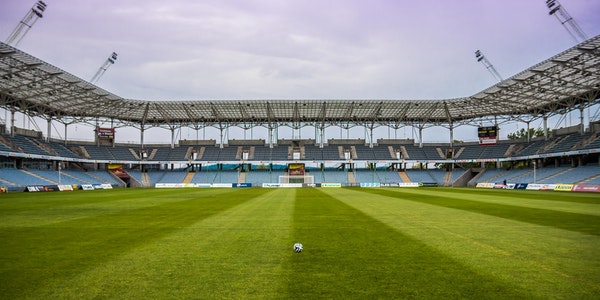Safety and Comfort:
Injury Prevention: Consistent lighting reduces the risk of accidents and injuries caused by poor visibility or sudden changes in light levels.
Spectator Comfort: Flicker-free lighting ensures a comfortable viewing experience for spectators, both in the stadium and watching broadcasts, enhancing overall enjoyment of the event.
(IV) Supporting Studies and Evidence
Research Findings:
Studies have demonstrated that LED lighting provides more uniform illumination and is less likely to flicker compared to traditional lighting sources such as metal halide and fluorescent lamps.
Research on visual comfort and performance under different lighting conditions highlights the benefits of flicker-free lighting in reducing eye strain and improving visual acuity.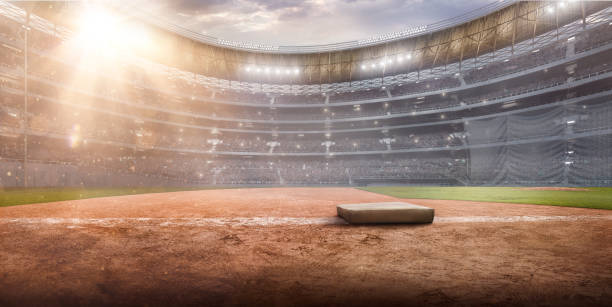 Case Studies:
Case Studies:
Professional Venues: Many professional sports venues have transitioned to LED lighting, reporting improvements in player performance, spectator satisfaction, and broadcast quality.
Comparative Analysis: Comparisons between venues using traditional lighting and those with modern LED systems consistently show superior performance and satisfaction with LED lighting.
(V) Conclusion
LED technology offers significant advantages in providing consistent and flicker-free lighting for sports venues. These benefits enhance player performance, officiating accuracy, and spectator experience while contributing to safety and comfort. As more venues adopt LED lighting systems, the improvements in visibility, visual comfort, and overall lighting quality become increasingly apparent, establishing LEDs as the preferred choice for modern sports lighting solutions.
2. Reduced fatigue during extended play
(I) Introduction to Fatigue in Sports
Definition:
Fatigue: A state of physical and mental exhaustion that can impair performance, reaction times, and decision-making abilities in athletes.
Extended Play: Prolonged periods of physical activity, such as during long matches, training sessions, or back-to-back games, where sustained performance is crucial.
Importance in Sports:
Reducing fatigue is essential for maintaining high levels of performance, preventing injuries, and ensuring player safety and well-being.
Optimal lighting conditions play a significant role in minimizing visual and physical strain, contributing to reduced fatigue.
(II) Role of LED Lighting in Reducing Fatigue
Consistent and Optimal Illumination:
Uniform Lighting: LEDs provide consistent, evenly distributed lighting that reduces the strain caused by fluctuating light levels and shadows, helping players maintain focus and energy.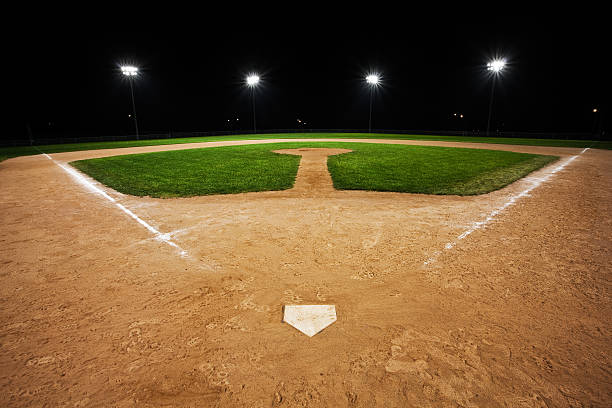 High-Quality Light: The high color rendering index (CRI) of LED lights ensures that colors are accurately represented, which helps players track the ball and movements more efficiently, reducing the mental effort required during play.
High-Quality Light: The high color rendering index (CRI) of LED lights ensures that colors are accurately represented, which helps players track the ball and movements more efficiently, reducing the mental effort required during play.
Flicker-Free Technology:
Elimination of Flicker: LED lights are designed to operate without flicker, which can cause visual fatigue and discomfort over extended periods. Flicker-free lighting ensures a stable visual environment, reducing eye strain and associated fatigue.
Reduced Visual Noise: The absence of flicker and glare minimizes visual disturbances, allowing players to concentrate better and maintain performance levels.
Adaptive Lighting and Environmental Comfort:
Adaptive Brightness: LED systems can adjust brightness levels in response to changing conditions, ensuring optimal lighting throughout the game and reducing the need for players to adapt to varying light levels constantly.
Color Temperature Control: The ability to adjust color temperatures helps create a visually comfortable environment, reducing eye strain and overall fatigue. Cooler light temperatures can help keep players alert, while warmer tones can create a calming effect during breaks.
(III) Practical Applications and Benefits
Player Performance and Endurance:
Sustained Focus: With reduced visual strain, players can maintain their focus and concentration for longer periods, enhancing their overall performance and endurance.
Improved Reaction Times: Consistent and optimal lighting conditions help players maintain quick reaction times, even during extended play, by reducing visual fatigue and mental exhaustion.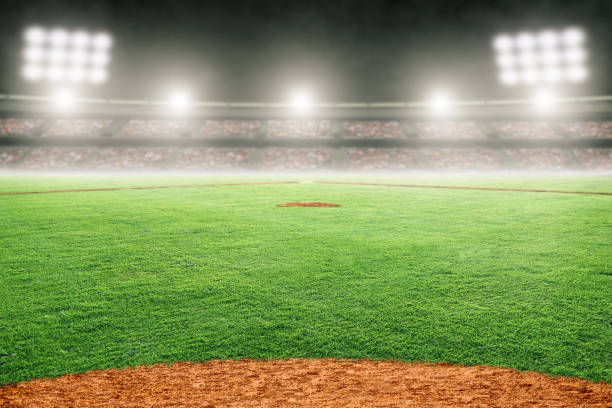 Training and Recovery:
Training and Recovery:
Effective Training Sessions: Improved lighting conditions during training help athletes perform at their best, allowing for more effective practice sessions and skill development.
Reduced Recovery Time: By minimizing visual and mental fatigue, LED lighting can contribute to faster recovery times between sessions, reducing the cumulative effects of fatigue over time.
Safety and Well-Being:
Injury Prevention: Consistent and flicker-free lighting reduces the risk of accidents and injuries caused by poor visibility or sudden changes in light conditions.
Enhanced Player Well-Being: Creating a comfortable visual environment supports the overall well-being of players, helping to prevent the adverse effects of extended play on their health.
(IV) Supporting Studies and Evidence
Research Findings:
Studies have shown that LED lighting improves visual comfort and reduces eye strain compared to traditional lighting systems, contributing to reduced fatigue during extended activities.
Research on workplace lighting has demonstrated similar benefits, where consistent and flicker-free lighting has been linked to lower levels of visual and mental fatigue among workers, suggesting parallel benefits for athletes.
Case Studies:
Professional Sports Venues: Numerous professional sports venues have reported enhanced player performance and reduced fatigue after upgrading to LED lighting systems.
Athlete Feedback: Athletes frequently cite improved visibility and reduced visual strain as key benefits of LED lighting, leading to sustained performance and less fatigue during long games and practices.
(V) Conclusion
LED sports lighting significantly contributes to reducing fatigue during extended play by providing consistent, flicker-free, and optimal illumination. These benefits enhance player performance, focus, and endurance while promoting safety and well-being. As sports venues continue to adopt advanced LED lighting systems, the positive impact on reducing fatigue and improving overall athlete performance becomes increasingly evident, establishing LEDs as an essential component of modern sports lighting solutions.
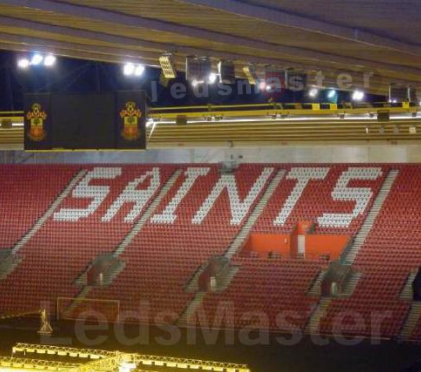 C. Psychological Benefits
C. Psychological Benefits
1. Improved focus and concentration
(I) Introduction to Focus and Concentration in Sports
Definition:
Focus: The ability to maintain directed attention on a specific task or objective, crucial for performing complex and demanding physical activities in sports.
Concentration: The mental effort directed towards the tasks of the moment, requiring sustained attention and cognitive engagement.
Importance in Sports:
High levels of focus and concentration are vital for optimal performance, accurate execution of plays, and quick decision-making.
Maintaining focus and concentration is particularly challenging during extended periods of play and under varying environmental conditions.
(II) Role of LED Lighting in Enhancing Focus and Concentration
Consistent and Optimal Illumination:
Uniform Lighting: LED lighting provides consistent, even illumination across the playing field, eliminating shadows and ensuring that players can clearly see the entire area, which aids in maintaining focus.
High Luminosity: Bright and well-distributed light helps reduce visual strain, allowing players to concentrate better on their tasks without distraction from poor lighting conditions.
Flicker-Free Technology:
Flicker-Free Operation: LED lights operate without the flicker that is common in traditional lighting systems. Flicker can cause visual discomfort and distraction, leading to decreased concentration. Flicker-free lighting ensures a stable visual environment, supporting sustained focus.
Reduced Eye Strain: By eliminating flicker, LED lighting reduces eye strain and fatigue, which can otherwise detract from an athlete’s ability to concentrate.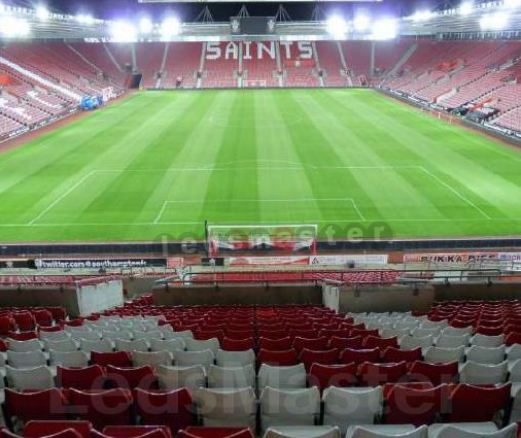 Adaptive Lighting Features:
Adaptive Lighting Features:
Brightness and Color Temperature Control: LED systems can adjust brightness and color temperature to match the specific needs of different times of day or varying weather conditions. These adjustments help maintain optimal visual conditions that support concentration.
Dynamic Adaptation: Real-time lighting adjustments based on environmental sensors ensure that lighting conditions remain optimal throughout play, helping players stay focused without having to adapt to changing light levels.
(III) Practical Applications and Benefits
Enhanced Player Performance:
Sustained Focus: Consistent and high-quality lighting helps players maintain their focus for longer periods, leading to better performance and fewer mistakes.
Improved Reaction Times: By reducing visual strain and providing clear visibility, LED lighting helps players react more quickly and accurately to the dynamic conditions of the game.
Better Training Outcomes:
Effective Practice: Improved lighting conditions during training sessions enhance players’ ability to focus on skill development and strategy implementation, resulting in more effective practice sessions.
Visual Training: LED lighting supports visual training exercises that help athletes improve their tracking and concentration skills, further enhancing their performance during games.
Mental and Physical Well-Being:
Reduced Mental Fatigue: Optimal lighting conditions reduce cognitive load and mental fatigue, allowing athletes to concentrate better and maintain their focus throughout extended periods of play.
Enhanced Comfort and Safety: By providing a comfortable visual environment, LED lighting enhances overall player well-being, reducing the risk of accidents and injuries caused by poor visibility or sudden changes in light conditions.
(IV) Supporting Studies and Evidence
Research Findings:
Studies have demonstrated that improved lighting conditions, particularly those provided by high-quality LED systems, can significantly enhance cognitive functions such as attention and concentration.
Research comparing traditional lighting systems with modern LED lighting consistently shows that LEDs improve visual performance and reduce visual fatigue, supporting better focus and concentration in athletes.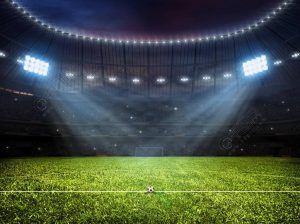 Case Studies:
Case Studies:
Professional Venues: Numerous professional sports venues have reported improvements in player focus and performance after transitioning to LED lighting systems.
Athlete Testimonials: Athletes frequently report that LED lighting provides better visibility and reduces visual distractions, helping them maintain their concentration and perform at their best.
(V) Conclusion
LED sports lighting plays a crucial role in enhancing focus and concentration by providing consistent, flicker-free, and optimal illumination. These benefits lead to improved player performance, better training outcomes, and enhanced mental and physical well-being. As sports venues continue to adopt advanced LED lighting systems, the positive impact on focus and concentration becomes increasingly evident, making LEDs an essential component of modern sports lighting solutions.
2. Enhanced mood and motivation
(I) Introduction to Mood and Motivation in Sports
Definition:
Mood: The emotional state of individuals that can influence their mindset, energy levels, and overall performance.
Motivation: The drive and desire to achieve goals and perform tasks, which is crucial for athletes to train effectively and compete at high levels.
Importance in Sports:
Positive mood and high motivation levels are critical for athletes to maintain peak performance, stay engaged in training, and overcome challenges.
Lighting conditions can significantly impact mood and motivation, influencing both mental and physical performance.
(II) Role of LED Lighting in Enhancing Mood and Motivation
Color Temperature and Mood Enhancement:
Adjustable Color Temperature: LED lights can be adjusted to different color temperatures to create an optimal environment. Warmer tones can create a relaxing atmosphere, while cooler tones can energize and invigorate athletes.
Circadian Rhythm Support: LED lighting systems can be programmed to mimic natural daylight patterns, supporting the body’s circadian rhythms and promoting better sleep, recovery, and overall mood.
Consistent and Optimal Illumination:
Uniform Lighting: Consistent lighting without dark spots or shadows creates a pleasant and engaging environment, helping athletes feel more comfortable and positive.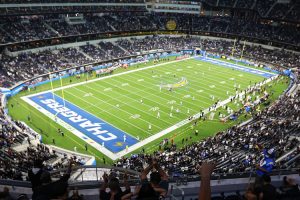
High-Quality Light: Bright and clear lighting enhances visibility and reduces strain, contributing to a more uplifting atmosphere.
Psychological Effects of Improved Visibility:
Reduced Stress: Clear visibility and reduced visual strain help lower stress levels, allowing athletes to focus on their performance without distractions.
Increased Confidence: Better lighting conditions improve athletes’ confidence by ensuring they can see and react to everything happening on the field or court, boosting their motivation.
(III) Practical Applications and Benefits
Player Performance and Team Dynamics:
Enhanced Energy Levels: Proper lighting helps maintain higher energy levels, keeping athletes motivated and ready to perform at their best.
Positive Team Environment: A well-lit and visually appealing environment fosters a positive team atmosphere, enhancing cooperation and motivation among teammates.
Training and Preparation:
Motivating Training Sessions: Bright and dynamic lighting can make training sessions more engaging and enjoyable, encouraging athletes to push themselves harder.
Optimized Recovery: Adjusting lighting to warmer tones during recovery periods can help athletes relax and recover more effectively, maintaining their motivation for future training.
Spectator Experience:
Enhanced Atmosphere: Well-designed LED lighting can create an exciting and vibrant atmosphere in sports venues, boosting the mood of both players and spectators, and enhancing the overall experience.
Fan Engagement: Improved lighting conditions can make games more visually appealing, increasing fan engagement and motivation to support their teams.
(IV) Supporting Studies and Evidence
Research Findings:
Studies have shown that lighting conditions significantly impact mood and cognitive function. Proper lighting can improve alertness, mood, and overall well-being.
Research in workplaces and educational settings has demonstrated that improved lighting conditions can enhance motivation and productivity, suggesting similar benefits for athletic environments.
Case Studies:
Professional Venues: Many professional sports venues have reported improvements in athlete mood and performance after upgrading to LED lighting systems, highlighting the psychological benefits of better lighting.
Athlete Feedback: Athletes often note that high-quality lighting makes them feel more energized and motivated, positively affecting their performance and training outcomes.
(To Be Continued)

